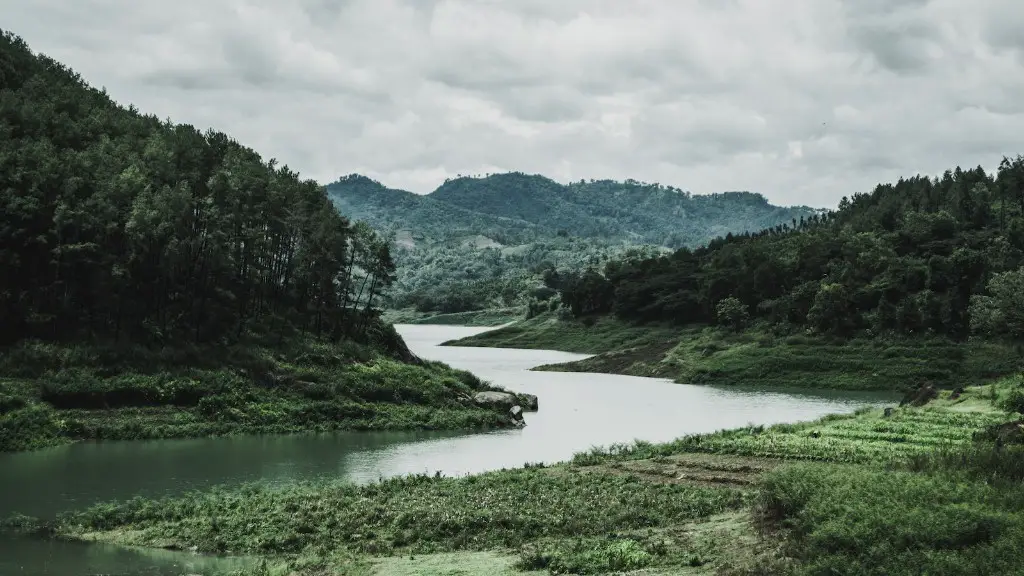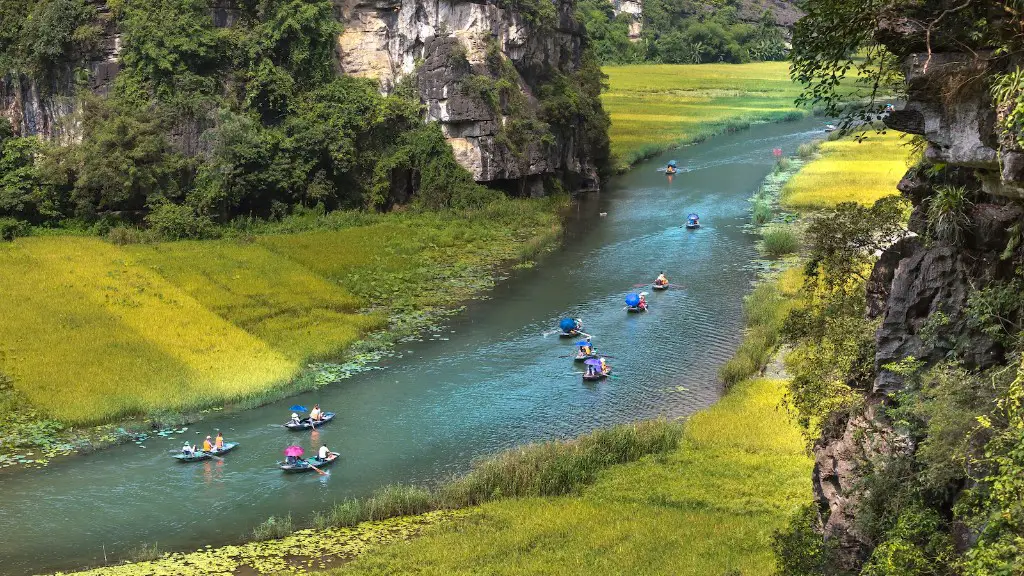The Yangtze River, one of the longest and most important rivers in the world, is utilized by humans in a variety of ways. It is a water source for rice cultivation and provides a navigable transport route. This river also functions as a habitat for animals and fishes, and it is home to some of the world’s largest hydroelectric projects. It is no wonder then that despite its considerable length, the Yangtze has become integral to the economic and cultural well-being of the people living in its vicinity.
Due to its immense size, the Yangtze is basically the main source of water supply to almost 40 percent of the population in China. This makes it essential for irrigation and agriculture, with rice being the most common crop associated with the Yangtze. Livestock also relies on the river for water and provisions, making it a very important economic asset.
As the river flows, cities and industrial hubs develop on its banks. This is because commercial activity is a major use of the Yangzte. In addition to transporting goods, the Yangtze also carries oil and other products, even international trade from nearby ports. This has made the river a key factor in the booming Chinese economy over the last few decades.
In addition to commercial and agricultural activities, the Yangtze is also a major contributor to China’s infrastructure and industry. Its hydroelectric power production, for example, currently provides about 10 percent of China’s total power needs. The power produced from the Dam at the Yangtze is enough to meet the needs of almost all of China’s population and industry.
Many species of animals, birds and reptiles can be found along the Yangtze, making the area a favorite destination for nature and wildlife enthusiasts. A variety of fish can also be found, making fishing an important source of subsistence and commercial activity in the many villages along the river.
The Yangtze is a symbol of China’s unique culture and hosts a variety of cultural events, as well as traditional festivals, boat races and other activities. Tourists from all over the world come to the area to appreciate its natural beauty and witness its cultural landmarks. Its importance as a symbol of China’s long and rich history means that it is held in the highest esteem by the citizens of this great country.
Fishes in the Yangtze River
The Yangtze is an extremely important water resource for the fishes that inhabit it as well as for the people who live along it. It is home to both freshwater and migratory species, making it a destination for anglers and recreational fishermen. Fish such as the giant salamander, carp and giant fish catfish can all be found in the river.
The massive Three Gorges Dam, located on the Yangtze at Three Gorges, China, has impacted fish numbers in the area. Despite the risks posed by the dam, the Yangtze remains a significant source of sustenance for the local people. Large-scale fish farms now cultivate fishes for consumption, while in the lower Yangtze area, fishing communities still depend on subsistence and local commercial catches.
Overfishing and other human activities, however, are dangerously threatening the survival of some of the river’s unique fish species, with the Chinese government implementing measures in an attempt to protect their sovereignty. Net size restrictions, bans on catching juveniles and the introduction of seasonal fishing bans are just a few of the laws that are helping to increase the fish population in the region.
Many foreign species have been unintentionally introduced to the Yangtze, with some, like the largehead hairtail, outcompeting native fish for food and dominating the river’s ecological system. In recent years, however, scientists have made successes in restoring the river’s delicate balance, with the reintroduction of native species, such as the yellow catfish.
Cultural Impact of the Yangtze River
The Yangtze is an extremely important part of Chinese culture and a source of immense pride, with many of its historical sites and temples being popular tourist attractions. Many of the cities along the river are steeped in symbolism and complexes constructed to honor its brave warriors, statesmen and great artists who made the Yangtze region their home.
The cultural wealth of the region has been preserved through the generations, with its rich history still respected and revered. The Yangtze has been a witness to the transition of China from a land of chaos to a more peaceful, unified state. Its significance as a navigable transport route, source of food and power, and an area of preservation and cultural importance is what makes it an integral part of modern China.
As the Yangtze flows through China, it brings with it an economic and cultural wealth that is not easily reproduced. The river is the foundation of one of the most prosperous countries in the world, and continues to be essential to the well-being of its many inhabitants and the development of their societies. It is this unique relationship that the Chinese people share with their beloved river.
Damming the Yangtze River
The Yangtze River has long been an important source of electricity for China. As of 2014, the Three Gorges Dam is the world’s largest hydroelectric power plant, capable of producing up to 22.5 gigawatts of electricity. Other dams along the river, including the Gezhouba and Xiluodu Dam, are also capable of producing large amounts of electricity.
The construction of these massive dams has resulted in a variety of environmental, social and economic consequences. On the one hand, large dams can produce substantial amounts of energy, but on the other hand, they also displace large numbers of people, alter the hydrological environment, and destroy local ecosystems.
The Chinese government is beginning to recognize the importance of balancing the needs of the environment with the demands of its population. The Yangtze River Basin is now the focus of a number of initiatives to ensure the sustainability of the river’s ecosystems, while also providing a reliable energy source.
The Chinese government is also investing heavily in renewable energy sources, such as solar and wind power. This is part of an ambitious push to reduce the country’s dependence on coal and other non-renewable sources of energy. It is likely that the Yangtze will continue to be an important source of electricity into the future.
Pollution in the Yangtze River
The Yangtze River has become increasingly polluted in recent years, with the bulk of the pollutants coming from industrial wastewater, agricultural runoff and sewage. While there have been some improvements in the water quality of the Yangtze, the river still suffers from high levels of toxic pollutants that pose a significant threat to the health and safety of its inhabitants.
The Chinese government has made strides in improving the water quality of the Yangtze, but more needs to be done. Several programs, such as the Yangtze River Protection Law and the Waste Water Pollution Prevention and Control Act, have been implemented in the hope of reducing the human impact on the river.
Increased public awareness and education is also needed to reduce the amount of pollutants entering the Yangtze. People should be encouraged to reduce their use of plastic, to properly dispose of their waste, and to use technologies that can help purify water.
The Yangtze River is an important asset to the people of China, and it is essential that its health is preserved. With the concerted efforts of the government and citizens alike, the Yangtze can once again become a vibrant symbol of China’s growth and prosperity.
The Yangtze River, in the Future
The importance of the Yangtze to the Chinese people cannot be overstated. It offers both an economic and cultural benefit to the country, and it is likely to remain essential to China’s development in the future. The river has become a symbol of the Chinese nation’s cultural heritage and is a source of national pride. It is also an important source of clean energy and fresh water.
In the future, China plans to continue investing in projects aimed at improving the health of the Yangtze River and its associated ecosystems. The Chinese government has made great strides in the past few decades in protecting the river and its inhabitants, and the country is committed to the preservation and reverential protection of the river.
It is clear that the Yangtze River will remain an integral and vital part of Chinese life for years to come. As China continues to grow, the Yangtze will come to be seen not just as a river of great importance, but also as an example of the lasting legacy of the Chinese people.





